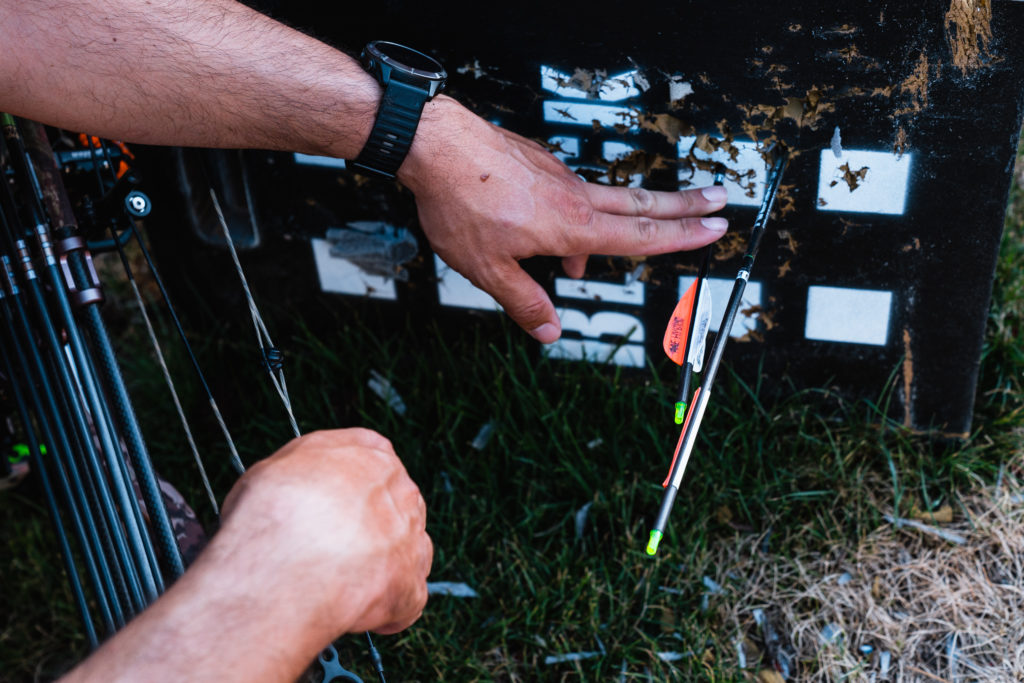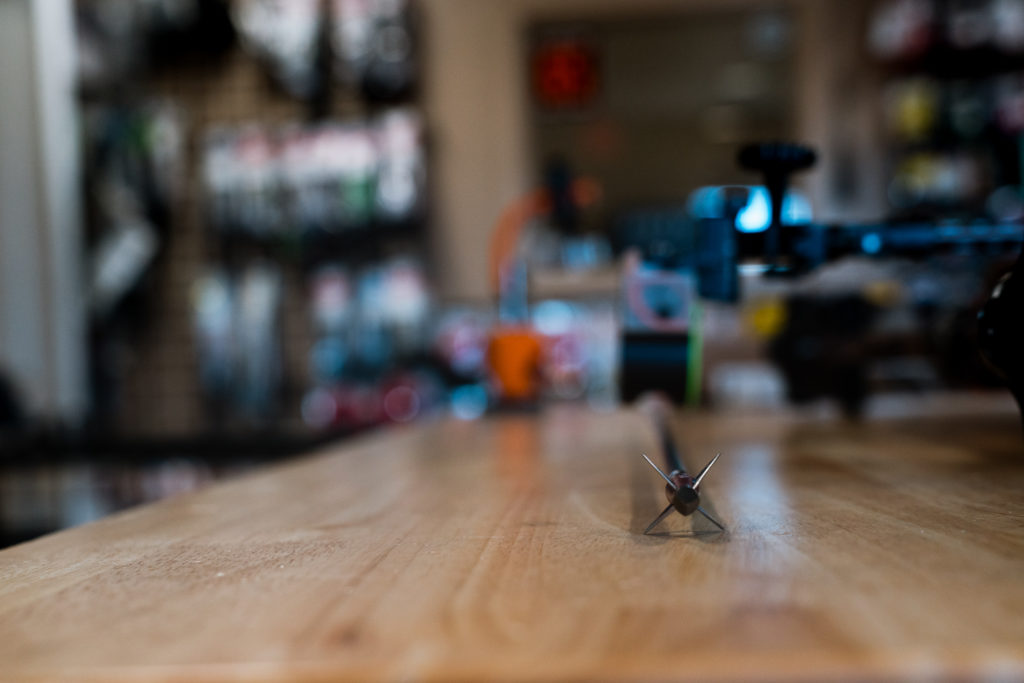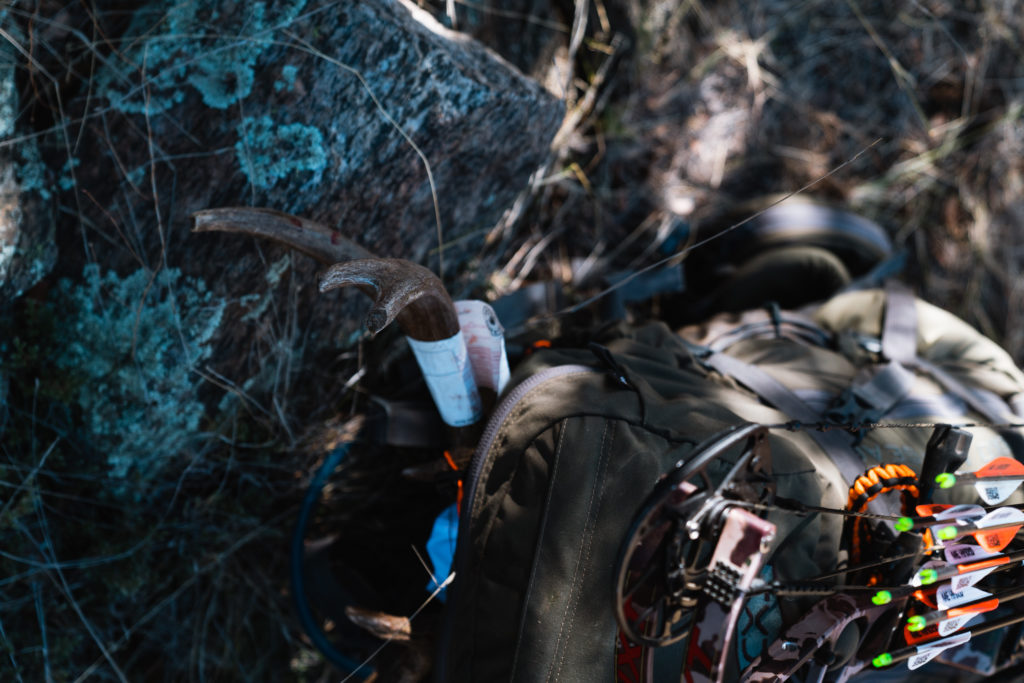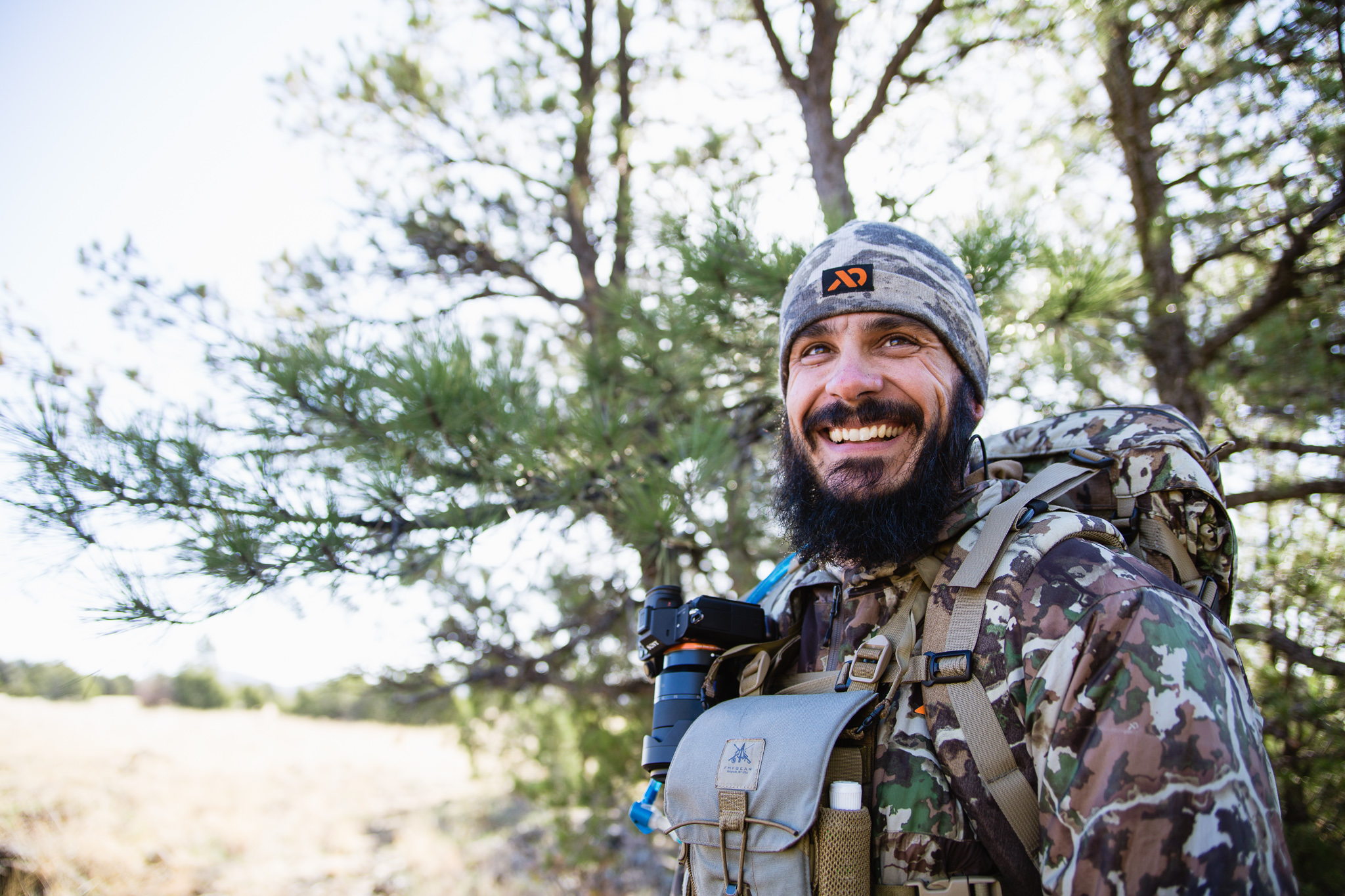
So far I’ve got my new bow for 2022 set up, paper tuned, and sighted in. The next part in my process of getting this new rig ready for hunting season is bareshaft tuning. When I say bareshaft, I’m referring to knocking off the vanes of your arrow so there is no steering aid in the back. If I can get this arrow with no training wheels grouping with a fletched arrow, the result is fantastic arrow flight. This is the most precise way that I’ve found to get my fixed blade broadheads flying with my field points. So, I’m gonna break it down for you here.
What I’m doing here is not bareshaft tuning through paper, but rather group tuning with a bareshaft. The goal is to get a bareshaft hitting the same impact point as a fletched shaft. And not just the same impact point, but straight in the target, not crooked. This will indicate optimum arrow flight, which is exactly what you want with fixed blade broadheads.
Also, before you start this process out a few things need to be in order. Make sure your bow is paper tuned and that your fletched field points are sighted in and grouping well. Also, cam timing needs to be in sync too, as well as having a properly spined arrow to the best of your knowledge. If you start just trying to shoot bareshafts without doing any of this first, the process is going to be MUCH MUCH more difficult.

This is best done on a non-windy day. You’ll pull your hair out if the wind is blowing. Better to wait if it is.
To get the ball rolling put your target out at 20 yards. You can start even closer than that, but 20 yards will paint a much better picture of what’s going on with your arrow flight. Now, it’s time to start shooting.
Take one shot with your fletched field point. If everything is as it should be that arrow is sitting in the bullseye after the shot breaks. Pick up that bareshaft now and aim for the same exact spot as you did with your fletched shaft. Let it fly and go observe the results.
In a perfect world, your bareshaft is hugging your fletched shaft down at the target. Don’t get me wrong, this does happen and I’ve actually had it happen to me before. When it does, no adjustments are needed and it’s time to go hunting. More times than not though, things aren’t that easy and there is a slight inconsistency.

You walk down to the target and your bareshaft is in fact not hitting the same spot as your field point. Heck, you might even notice that the bareshaft is actually crooked in the target. Not to worry, we can fix this.

Assuming that everything on your bow is sound and working properly, all we’re going to do here is make a slight adjustment to our arrow rest. For left/right inconsistencies, move your rest towards the bareshaft a very small amount. Like 1/64 of an inch small. This should bring your field point and bareshaft closer together.
If they don’t come together, you might have an arrow spine issue or something else going on with your bow. Hits to the right that aren’t remedied with a rest adjustment indicate a weak spine. Hits to the left that aren’t remedied with a rest adjustment indicate too stiff of a spine. Get that checked out before proceeding.
The reason to move it towards and not away from the bareshaft is you’re actually straightening out the back of the arrow. If your bareshaft is hitting to the right, this means that you’re getting a tail left kick, which is making your arrow plane to the right. The opposite is true for hits to the left. You can see the tail kick down in the target oftentimes. With micro adjustments, the tail will straighten out to match the fletched shaft. Do this incrementally until they are hitting together within the size of a baseball.

If you find that your bareshaft is actually hitting high or low the first thing you’ll want to do is get your cam timing checked. This is notorious for causing up/down variation. Also, check for the presence of nock pinch. If those are both sound, then the adjustment to your rest is going to be the opposite of what we did for left/right hits. Meaning that you’ll slightly move the rest(SLIGHTLY!) in the opposite direction of the bareshaft. So, high hits will require moving the rest down a touch and the opposite for low hits.
As you do this, don’t pay much mind to where on the target the arrows are hitting. Your main objective here is to get them hitting together. After that, it’s just a simple sight adjustment.

Going through this process it’s really important to take your time and recognize if and when you are getting tired. It is imperative that you maintain good form and shot execution throughout, as your bareshaft is going to tell you if you don’t. From there, you’ll just experience inconsistency on your part. So, don’t be afraid to take a break, or even come back the next day. You’ll be better off doing so.

Once your bareshafts are hitting with your field points consistently at 20 yards you can also fine tune this even more by moving back in yardage a bit. I don’t personally think it’s necessary to move farther than 50 yards, but it’s your time. Just know that the farther you move back, the more on your game you need to be in terms of form and shot execution.

If indeed your bareshafts are grouping consistently with your fletched shafts it’s time to screw on a broadhead. After all, the whole point of going through these steps is to get your fixed blade broadheads flying with your field points. Perfect arrow flight.
I’ll tell you this. Time and time again my broadhead hits right with my bareshaft. So, if my bareshaft isn’t hitting with my fletched, my broadhead won’t. And the same is true when it is. What I’m getting at is there shouldn’t be any issue with good broadhead flight after going through this whole thing. If there is, I daresay something happened during the process that wasn’t consistent. Be it your grip or something going on with your bow. Something changed and you’re seeing the results downrange.

So, is this all really worth it? In my opinion it is, but that’s just me. Doing things this way is what I have the most confidence in to ensure my fixed blade broadheads are impacting where I want them to. It’s hard enough getting opportunities in the field with a bow. Being at full draw and wondering if my arrow is going to hit where I want it to is not a good place to be mentally. And I’ve been there. At the end of the day there is more than one way to skin a cat. They are all different routes that all end at the same destination. So, whether it’s bareshaft tuning or another, enjoy the ride, and head into the field prepared. You’ll be glad you took the scenic route.

This site contains various affiliate links for products I use and love. Any purchases made through these links will earn me some coffee money.
Copyright 2019 Dialed In Hunter
Design by NXNW.